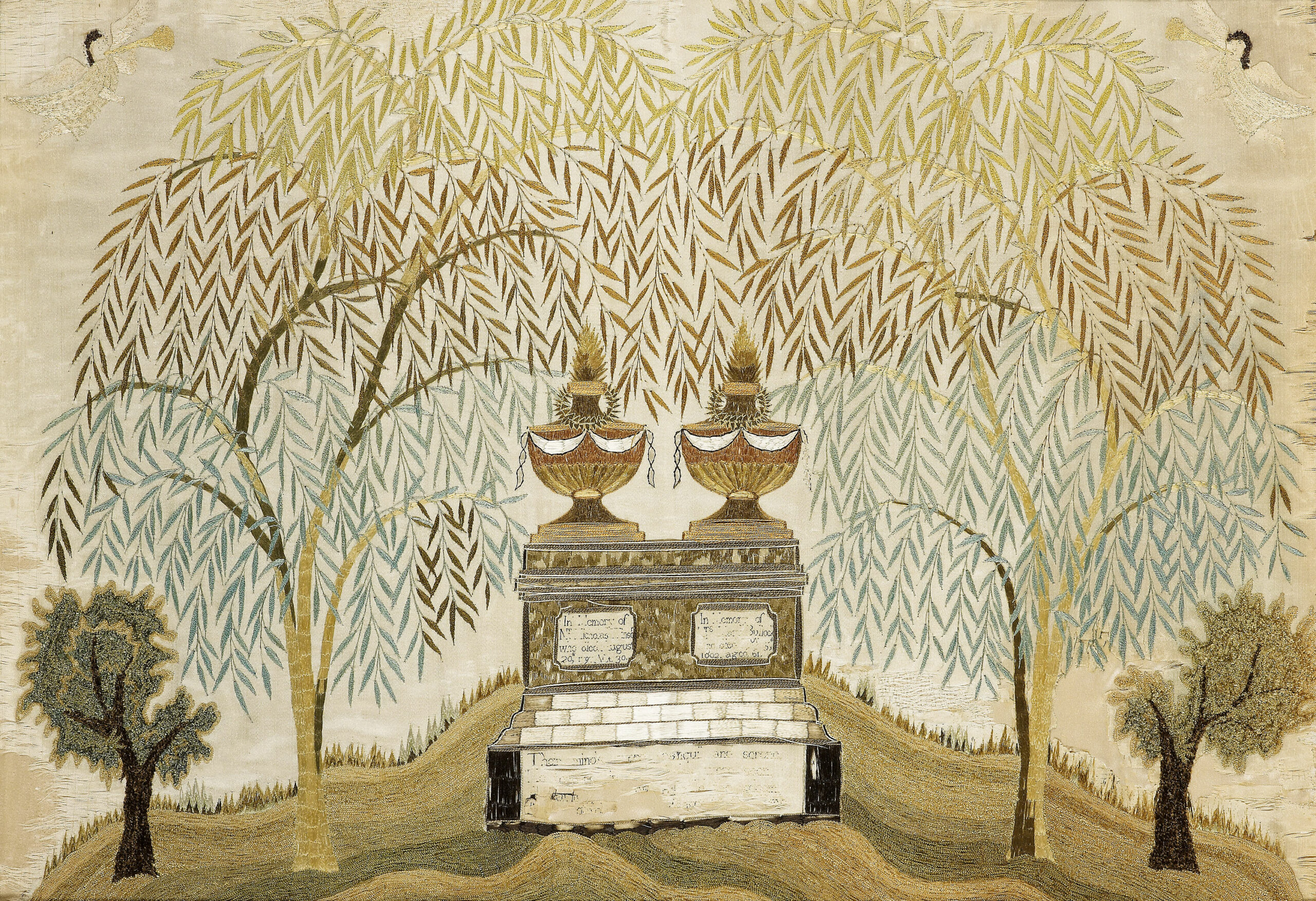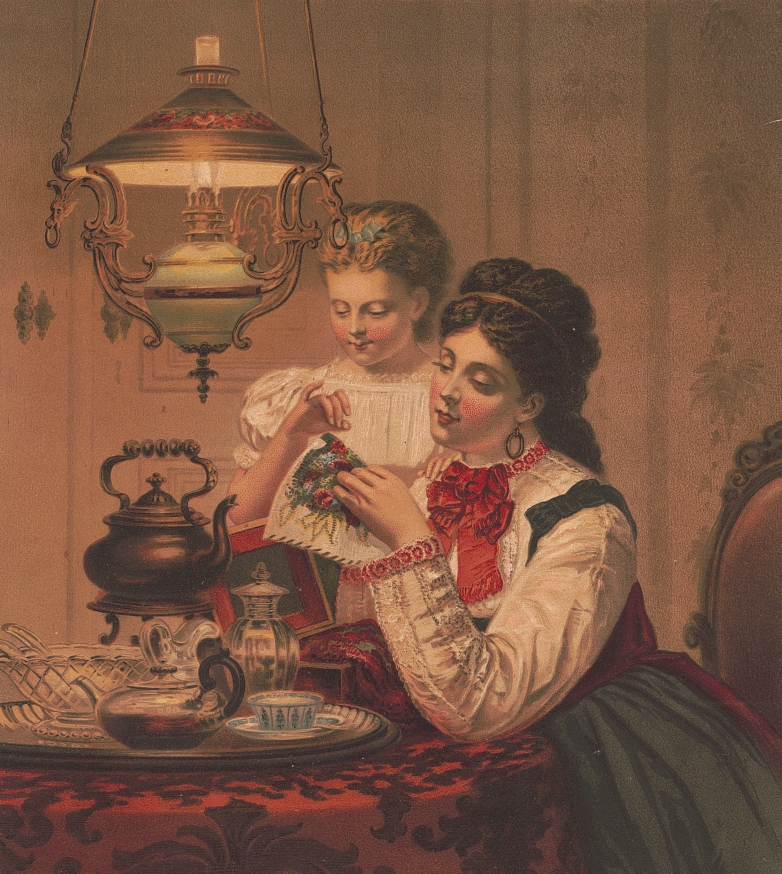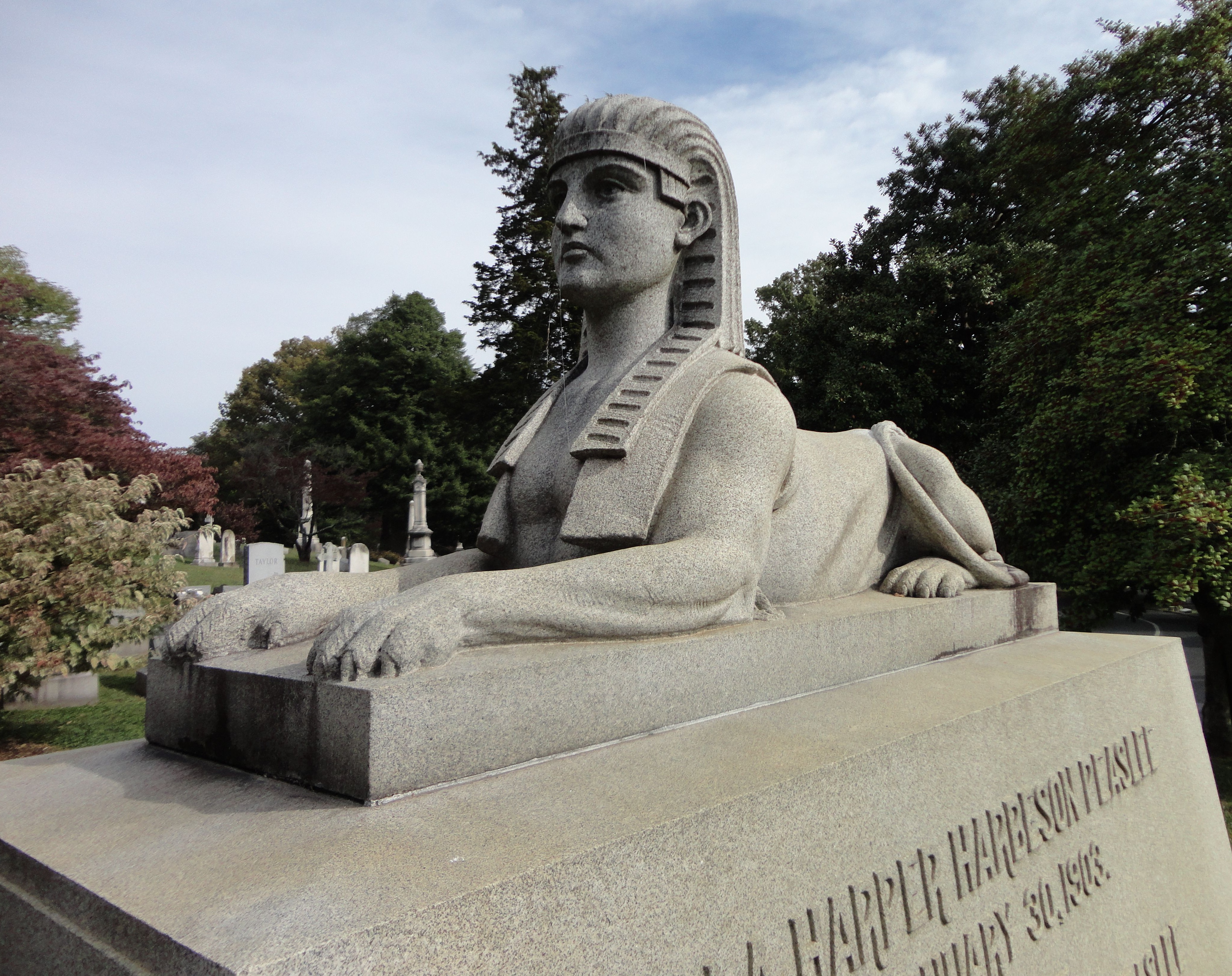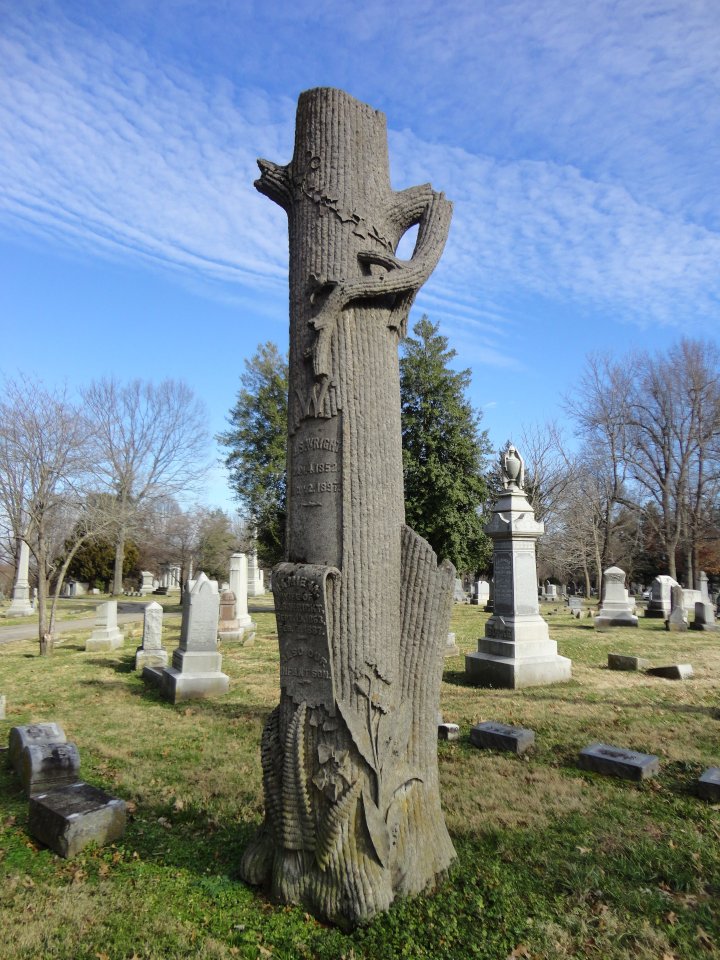Today, memorial keepsakes commemorating a deceased loved one are common. One can buy mementos created from funerary ashes, window decals, tattoos, plaques, wind chimes, and blankets, often featuring photos of the deceased. Memorial keepsakes are not a new thing. Before commercially produced mementos became available, hand-made needlework memorialized the death of loved ones.
Select the images for more information.
18th-century Mourning Embroidery

In colonial America, silk embroidery was considered the most elegant type of needlework. Imported silk thread and fabrics were more expensive than locally produced wool embroidery yarns (crewel yarn) or linen thread. Americans made attempts to produce silk domestically, but production was always limited. After the Revolutionary War, American ships began to trade directly with China and silk embroidery supplies fell in price, making this type of embroidery more popular. Read more about silk in America here.
Mourning pictures became especially fashionable after the death of George Washington in 1799. The urns, columns, and tombstones reminiscent of Greek and Roman monuments also recalled Greco-Roman democratic and republican ideals in revolutionary-era America. Patriotism and mourning symbolism were combined. Other popular silk embroidery designs featured landscapes, still-life images with flowers and birds, and patriotic themes.

Mourning embroidery usually featured family members at the tomb of loved ones surrounded by weeping willows and angels. The monuments were personalized with the names and dates of the deceased. The weeping willow tree as a symbol of mourning reached the peak of its popularity in the 1820s. Napoleon was reported to have asked to be buried under a weeping willow tree on St. Helena, the island of his final exile.
Mourning Embroidery in Girls’ Education
Many of these needlework pictures were created by teenage girls from well-to-do families while at boarding schools. Fancy needlework was one of the classes in “female accomplishments”; other classes included painting, music, and etiquette. Students may have chosen needlework designs professionally drawn on silk fabric, traced popular prints on silk fabric, or created their own designs. In the girls’ homes, parents displayed the needlework picture to showcase their daughters’ skills and social refinement.

The faces of the mourners were often hand-painted by local portrait artists or art class instructors so family members could be recognized. In some examples, the background scenery was painted and embroidery was used to complete the picture. The hair of the deceased was sometimes used as thread in the needlework designs. Mourning pictures were also created completely from hair, but that is the topic of a future blog.

Mourning needlework samplers were also created with less expensive materials such as wool yarns on linen or cotton fabric using methods referred to as cross-stich or needlepoint today.
19th Century Memorial Art
Handmade memorial embroidery and other memorial art continued to be popular throughout the first half of the 19th century. Sentimental representations of death permeated the culture in both images and poems, novels, news stories, and essays. Women were expected to be emotional and especially sensitive to tragic stories and respond with tears and emotion. Long after the death of loved ones, mourning art featuring sad women at a grave evoked the emotions expected by a wider culture.
One of the most unusual surviving examples of mourning needlework is the “Graveyard Quilt,” created over several decades of the 19th century by Elizabeth Roseberry Mitchell and her daughters, Sarah and Elizabeth. The quilt features a graveyard in the center with caskets labeled with the names of deceased family members. View images of the Graveyard Quilt here.

During the years of the Civil War, memorializing the dead reached a peak as over 600,000 soldiers died. Some women continued to remember their deceased loved ones with handmade items. For many others, mourning was increasingly expressed through the purchase of consumer goods. Memorial prints could be purchased and personalized with the name of the deceased. The growing funeral industry reinterpreted old customs and invented new ones to sell products and services. Specially printed death announcements, funeral notices, invitations, memorial cards, and visiting cards were promoted. After photography was introduced, photographs were taken and distributed of the deceased in the casket, alone and surrounded by the family and funeral attendees. Special scrapbooks and albums were available for purchase to save and display these items. Handmade memorial needlework gave way to store-bought items manufactured in a growing industrial economy.
Resurgence of Memory / Remembrance Sewing
In recent years, sewing and craft projects created from the clothing or belongings of the deceased have become popular. Quilts, pillows, stuffed toys are frequently featured online – both patterns to do-it-yourself or seamstresses who will do the work for a fee. Old ideas become new again!
Test your knowledge of 19th-century needlework with this fun quiz – Fancy Work: Needlework of the 1800s Quiz
 References:
References:
- Plain & Fancy: American Women and Their Needlework, 1700-1850 by Susan Burrows Swan and George J. Fistrovich, 1977
- A Winterthur Guide to American Needlework by Susan Burrows Swan, 1976
- Discovering Quacks, Utopias, and Cemeteries by Cynthia Williams Resor, 2019
About the header image: This silk-on-silk embroidered picture commemorates the deaths of Nicholas (1767–1797) and Mary Bullock (?-1802). It was probably stitched by either Mary or Louise (Louisa) Winsor, daughters of Mary Bullock Winsor (1767-1816) and Nicholas Winsor (1767-1797). The family connection and style of this piece link it to Mary Balch’s school in Providence. Silk-on-silk embroidery demonstrated the needlework skills of young women. Image from the Art Institute of Chicago





